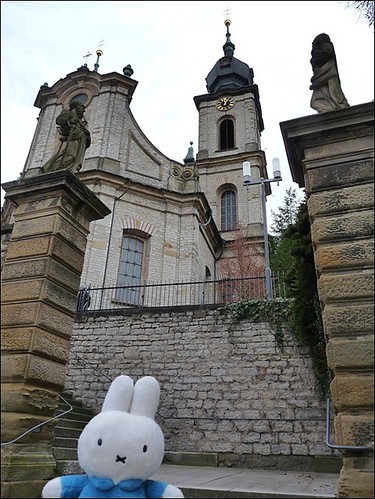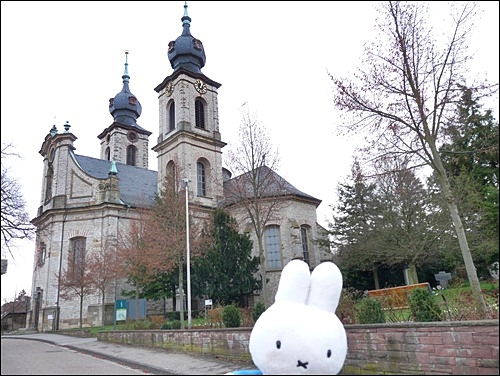It's the last day of the year and it's not raining. So we decided to go out on a sightseeing tour in Bruchsal.
At first we walked through the so called Bürgerpark, citizens' park. It was created in end of 1980something. There are two memorials of National Socialism victims and a third memorial as sign for understanding between different people of the world.
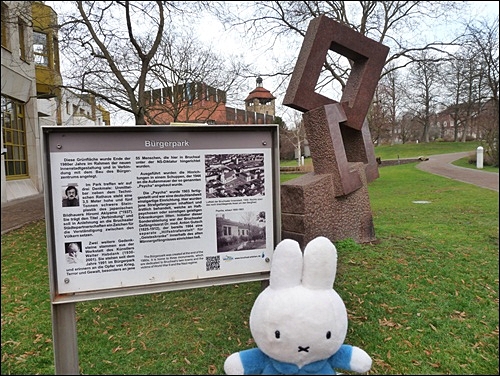
Here you see the medieval tower and a part of the community centre. The tower was built in 1358 and is the oldest building of Bruchsal. It belonged to the old castle.
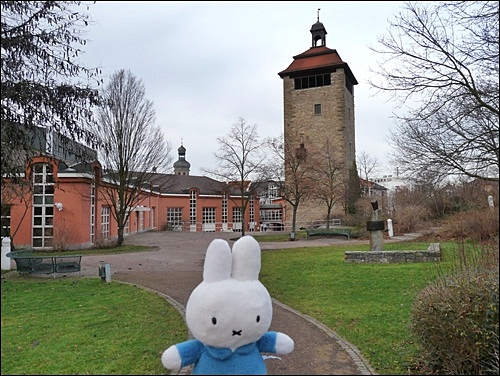
Bruchsal has about 42 000 inhabitants, if you also count those in the five suburbs, which are Heidelsheim, Helmsheim, Untergrombach, Obergrombach and Büchenau. It was first mentioned in 796 A.D., but there had been an older settlement. 80 % of Bruchsal had been destroyed during World War II. on 1rst of March 1945. So you hardly find really old places.
Schloss Bruchsal is one of the most beautiful Baroque palaces in Germany and the only episcopal Baroque residence on the Upper Rhine. The foundation stone was laid in 1722 by Cardinal Damian Hugo von Schönborn, Prince Bishop of Speyer, who made the palace the centre of his absolutist dominion.
After being almost completely destroyed in the final days of World War II, the main tract was painstakingly reconstructed according to the original design and work was completed in 1975, including the magnificent dome, Marble Hall and Prince's Hall. The staircase designed by Balthasar Neumann is considered to be an architectural tour-de-force and has been described as the "finest staircase in the world".
We're now standing in front of one of the three entrances to the palace church called St. Damian and Hugo. From here you can see the county court, the Damian Gate and the tower of the jailhouse. The building on the left side,m which of course is the right part of the building, houses the chamber music hall.
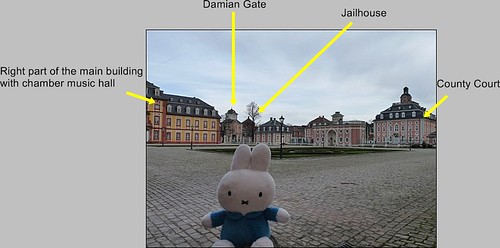
Inside the church you can see these plates, which show the palace during the years. In the top photo you can see, how it looked like after World War II. In the last photo we were standing just in the corner, which you see in the middle of this top photo, between main building and church.
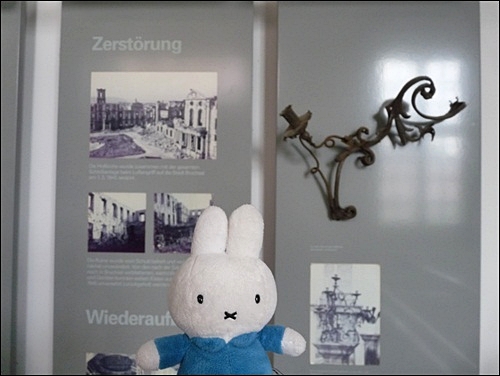
The church wasn't rebuilt in baroque style. It is really modern. Somehow that's sad, but the costs were just too high. Here we are at the backside of the church. You see, that the tower isn't directly next to the church.

This is the backside of the palace. In summer there are weeks, when they play open air theatre and in winter there is a second Christmas market since a few years.
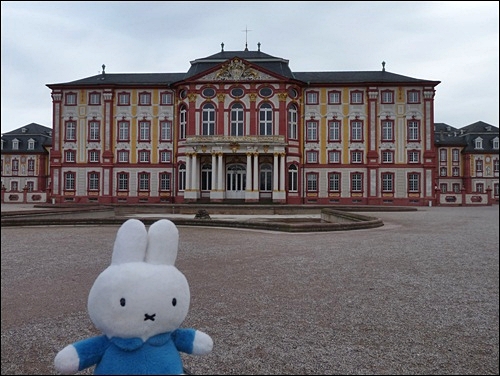
Next to the main way through the palace garden you find a lot of statues. At one crossing you see in each corner one statue of the four elements: fire, water, earth and air. Here you see the statue earth.
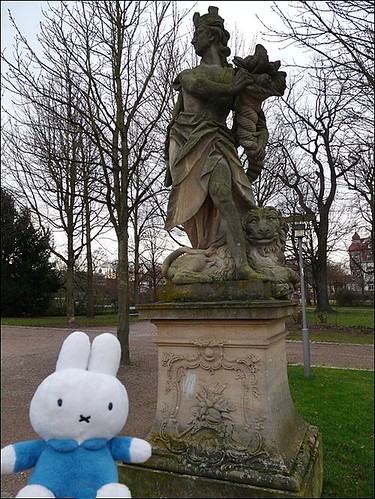
The statues in the next crossing's corners show the four seasons: winter, spring, summer, autumn. Here you see winter.
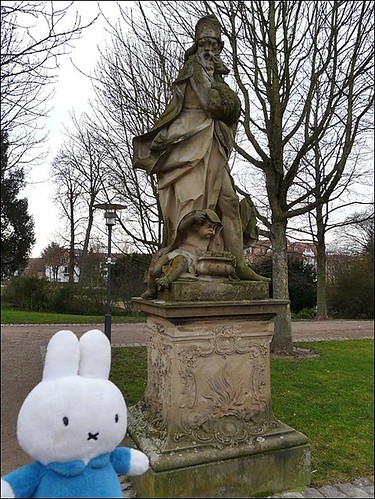
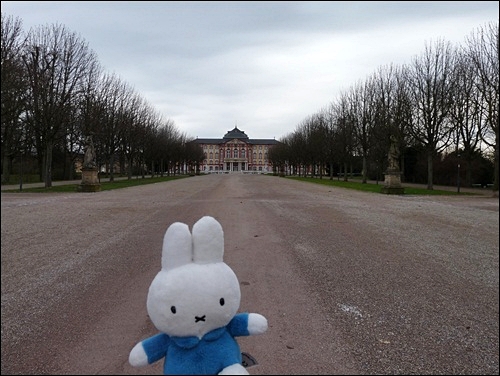
At one small gate you come to this street with really old houses.
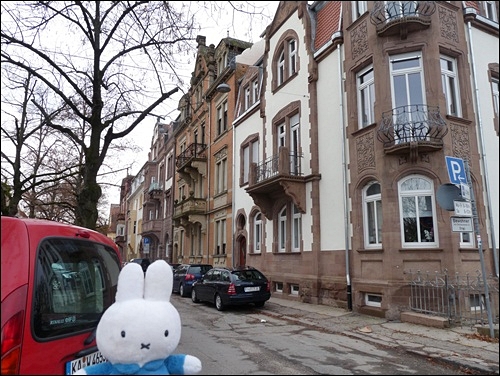
Here you see the mainbuilding of the palace.
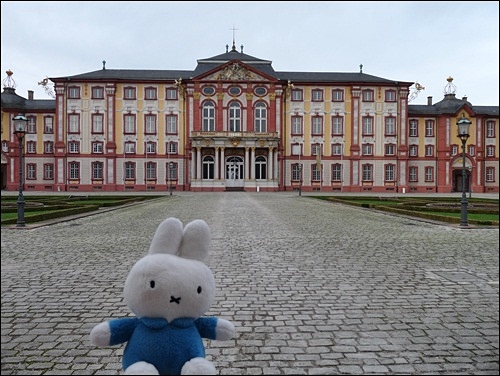
Just turning around on our heels we saw the county court building and the Amalie fountain.
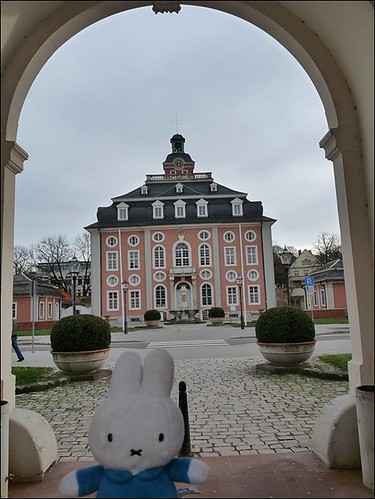
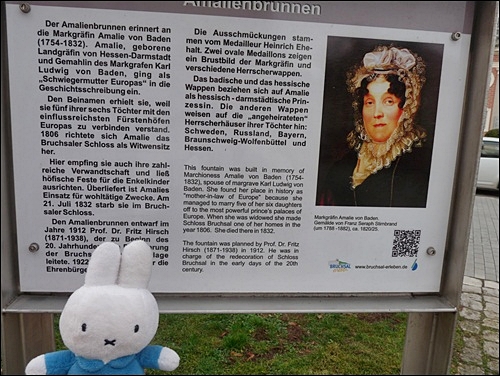
The Amalienbrunnen is called Schnecklesbrunnen ( in Bruchsal dialect), which means snail fountain.

This is the gate called Damianstor. It is the entrance to the palace area. In the Damian Gate you can visit art exhibitions.
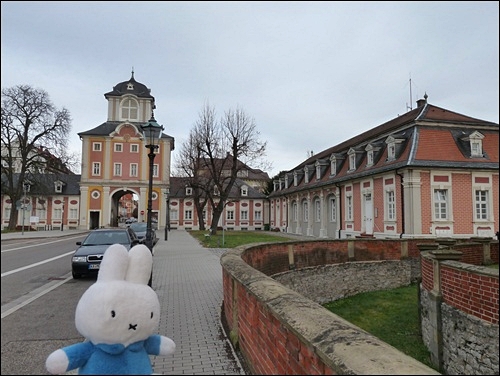
We walked to the Stadtgarten, another park. This fountain is called Ferdinand Keller Brunnen. Behind the fountain you can see a part of a grammer school called Schönborn-Gymnasium.

The Belvedere on the edge of the "Stadtgarten" was built by Leonhard Stahl in 1756 as a hunting lodge for Prince Bishop Franz Christoph von Hutten. The location was chosen so that the lodge would command an unspoiled view of the palace, town and Rhine rift valley beyond.
Especially worthy of note are the two towers, each of which has a viewing platform topped with a Chinese-style baldachin – an example of the fashion for chinoiserie prevalent at that time. Today, the Belvedere is used as a venue for concerts and theatre productions.
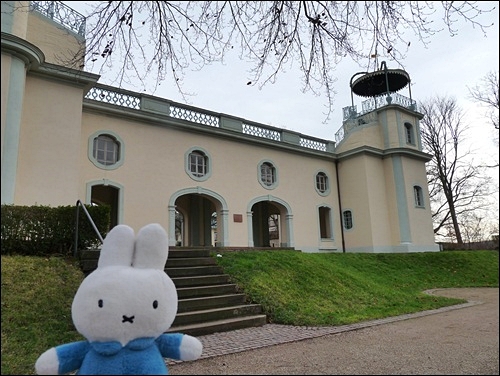
At top of the Andreasstaffel, high stairs, you have a great view over Bruchsal. The houses below belong to the oldest part of Bruchsal. You also can see the tower of the ancient castle and of two churches (from left). The houses, which are in one line right in front of us, belong to the Huttenstraße.
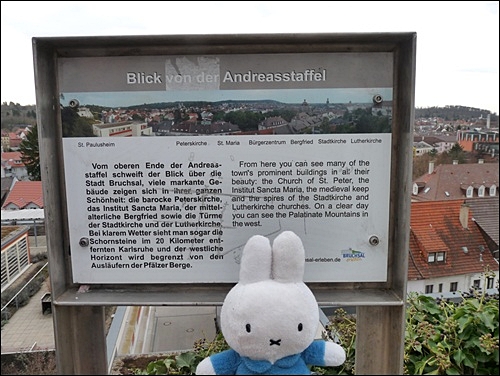
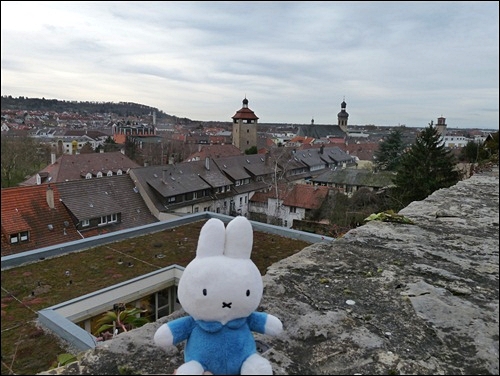
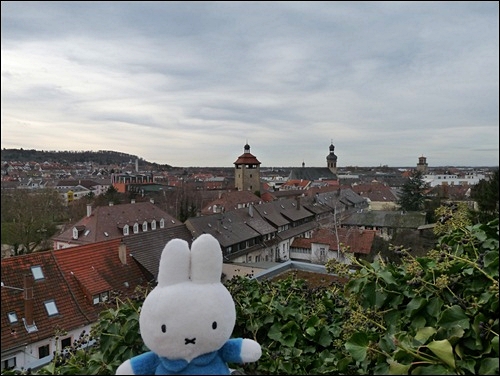
Here you see the baroque church St. Peter in the far. If you take a look right to the edge to the wood, you can see a big house. This house is called Sancta Maria. It is a school for social education and it is still home for Franciscan nuns.

The buildings right in front of us and the white building in the far on the left side are all part of the old people's home. The big grey building behind the white is another grammer school called St. Paulusheim.

We also walked a bit down the Andreasstaffel and had a few to the top from there. You see that small house. It is called Wingerthäusle. Maybe you can read about it in the next photo, it might be a bit small.
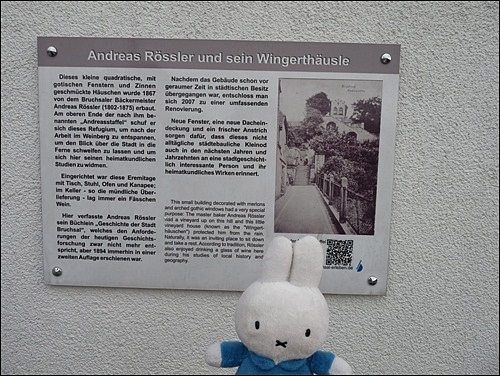
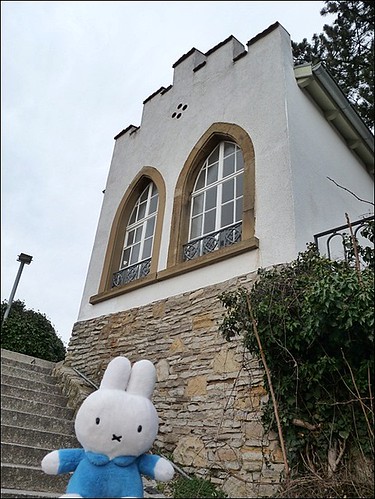
We saw a beautiful house next to the Stadtgarten. If you plan to stay in Bruchsal for a holiday, you can rent this house for a while. It belongs to a hotel and restaurant.

Finally we walked back home again. We came to the baroque church St. Peter, which is only a few hundred feet from our host's place. THe church is still baroque inside. It is located at the edge to the graveyard.[img]null[/img]
